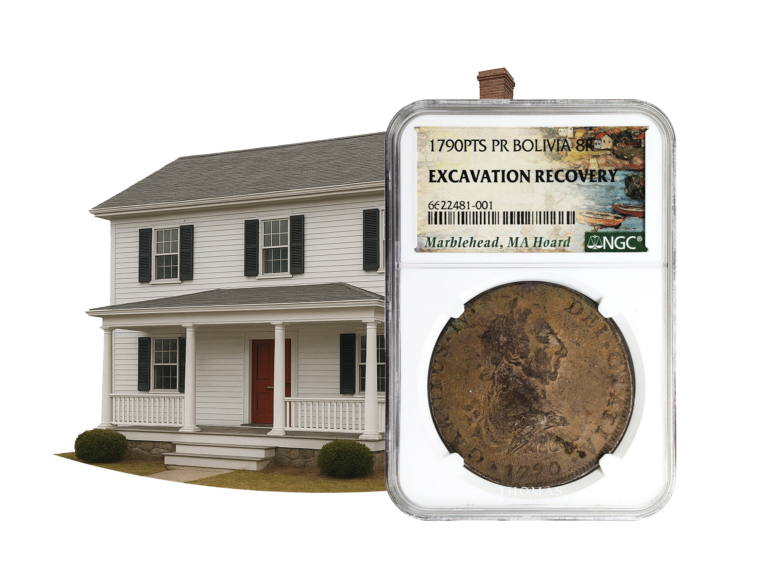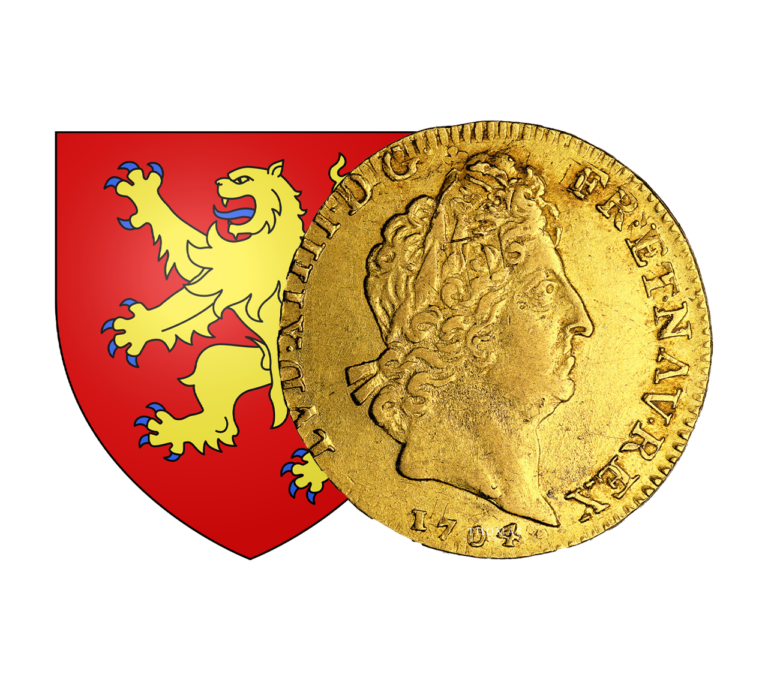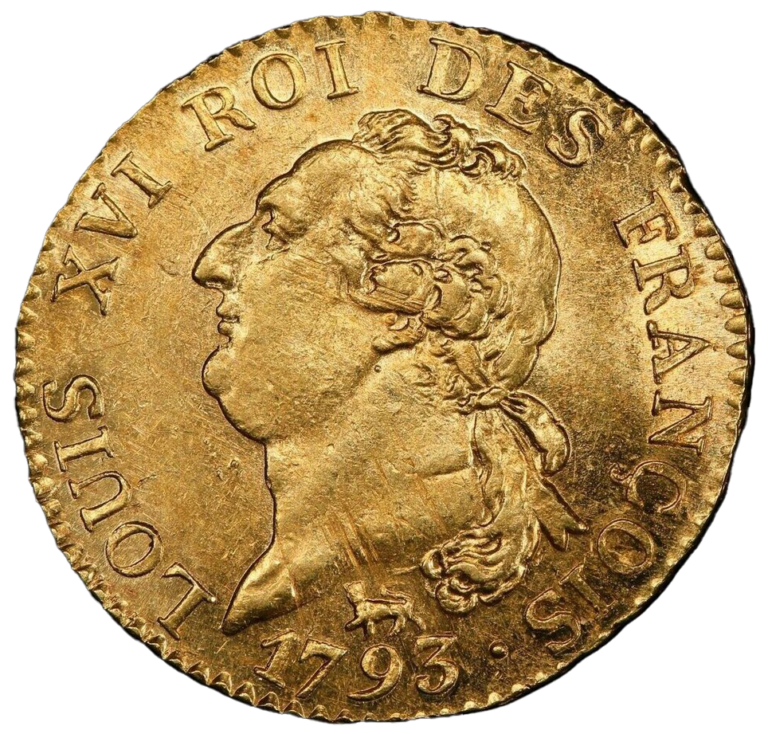
Discover all the news and articles from TNUMIS Magazine exclusively
The Ecu d’Or
The gold écu is one of the most iconic coins in French monetary history. First minted in 1266 during the reign of Louis IX, this coin symbolized the unification of the kingdom and became the benchmark for the French monarchy for several centuries. Here’s a detailed overview of the history, value, and evolution of the gold écu throughout the reigns of the kings of France.
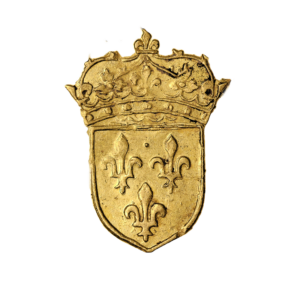
The Origin of the Gold Shield under Louis IX
In 1262, Louis IX (1214-1270) known as “Saint-Louis” carried out a monetary reform which unified the different monetary systems of the kingdom.
The livre tournois gradually became the reference currency, and the gold écu was introduced for the first time in 1266 with a weight of around 4g.
The shield of Louis IX is adorned on the obverse with a shield strewn with six fleurs-de-lis and on its reverse, a fleur-de-lis cross accompanied by the Christian legend “XPC VINCIT, XPC REGNAT, XPC IMPERAT” (“Christ conquers, Christ reigns, Christ commands”). This coin marks a turning point in the history of French numismatics and quickly became a symbol of royalty.
The Evolution of the Gold Shield under Successive Kings
Its name comes from the word “écu” from the Latin scutum “shield”, represented on coins with the arms of the Kingdom of France.
The different types of gold écu take their names from motifs that adorn the coins, such as dolphins for the gold écu of Dauphiné or salamanders for the gold écu with salamanders.
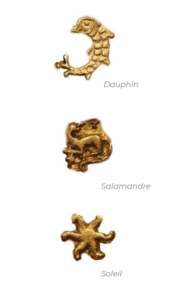
Some examples of gold coins:
Louis IX (1263 à 1270) :
l’écu d’or
Philippe VI de Valois (1328 à 1350) :
l’écu d’or à la Chaise
Charles VI (1380 à 1422) :
l’écu d’or à la Couronne
Charles VII (1422 à 1461) :
l’écu d’or à la Couronne
l’écu d’or au Briquet
Louis XI (1461 à 1483) :
l’écu d’or au Soleil
l’écu d’or au Soleil du Dauphiné
l’écu d’or à la Couronne
Charles VIII (1483 à 1498) :
l’écu d’or au Soleil
l’écu d’or au Soleil du Dauphiné
l’écu d’or au Soleil de Bretagne
Louis XII (1498 à 1515) :
l’écu d’or au Soleil de Provence
l’écu d’or au Soleil du Dauphiné
l’écu d’or au Porcs-épics
l’écu d’or aux Porc-épics de Bretagne
François Ier (1515 à 1547) :
l’écu d’or au Soleil
l’écu d’or au Soleil du Dauphiné
l’écu d’or au Soleil de Bretagne
l’écu d’or au Soleil de Provence
l’écu d’or aux Salamandres
l’écu d’or au Soleil à la petite Croix
l’écu d’or au Soleil du Dauphiné et à la petite Croix
l’écu d’or à la Croisette
l’écu d’or du Dauphiné à la Croisette
Henri II (1547 à 1548) :
l’écu d’or à la Croisette
l’écu d’or à la Croisette de Provence
l’écu d’or à L’effigie
l’écu d’or aux Croissants
Charles IX (1560 à 1574) :
l’écu d’or au Soleil
l’écu d’or au Soleil du Dauphiné
Henri III (de 1574 à 1589) :
l’écu d’or au Soleil
Charles X (1590 à 1594) :
l’écu d’or au Soleil
Henri IV (1590 à 1610) :
l’écu d’or au Soleil
Charles X (1591 à 1595) :
l’écu d’or au Soleil
Louis XIII (1610 à 1646) :
l’écu d’or au Soleil
l’écu d’or au Soleil du Dauphiné
Louis XIV (1643 à 1657) :
l’écu d’or au Soleil
The Evolution Towards the Louis d’Or and the End of the Écu
Under Louis XIII (1610-1643), a monetary reform led to the creation of the louis d’or, which replaced the gold écu in current exchanges.
These new coins are distinguished by the appearance of the King’s portrait on the obverse to replace the shield.
A vestige of the golden shield is found on the famous Louis d’or with the shield, which regains its shield and its fleurs-de-lis.

The Value and Importance of the Gold Shield
The gold ecu represented not only an important means of payment but also a political and symbolic tool. Its stability and value made it a prestigious currency used in the most important transactions, both nationally and internationally.
The weight and value of the gold ecu would evolve over the reigns, reflecting economic fluctuations, monetary reforms and the increasing scarcity of gold.
Gold shields minted under the kings of France have survived through the ages, bearing with them the emblems of royal power, and are today sought after by collectors for their beauty and rarity. The shield is thus a piece of history, of numismatics, part of the treasures of French culture.
The Legacy of the Golden Shield
The gold écu has played a fundamental role in the economic history of France. Its introduction under Louis IX marked a key moment in the history of currency, and its evolution over the centuries testifies to the prosperity and grandeur of the kingdom.
Today, the gold shield is a coin prized by numismatists.
Whether collected by reign, mint or type, this coin remains and will remain a tangible testimony to France’s royal past.
